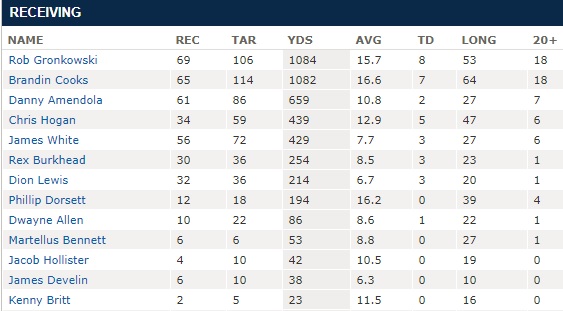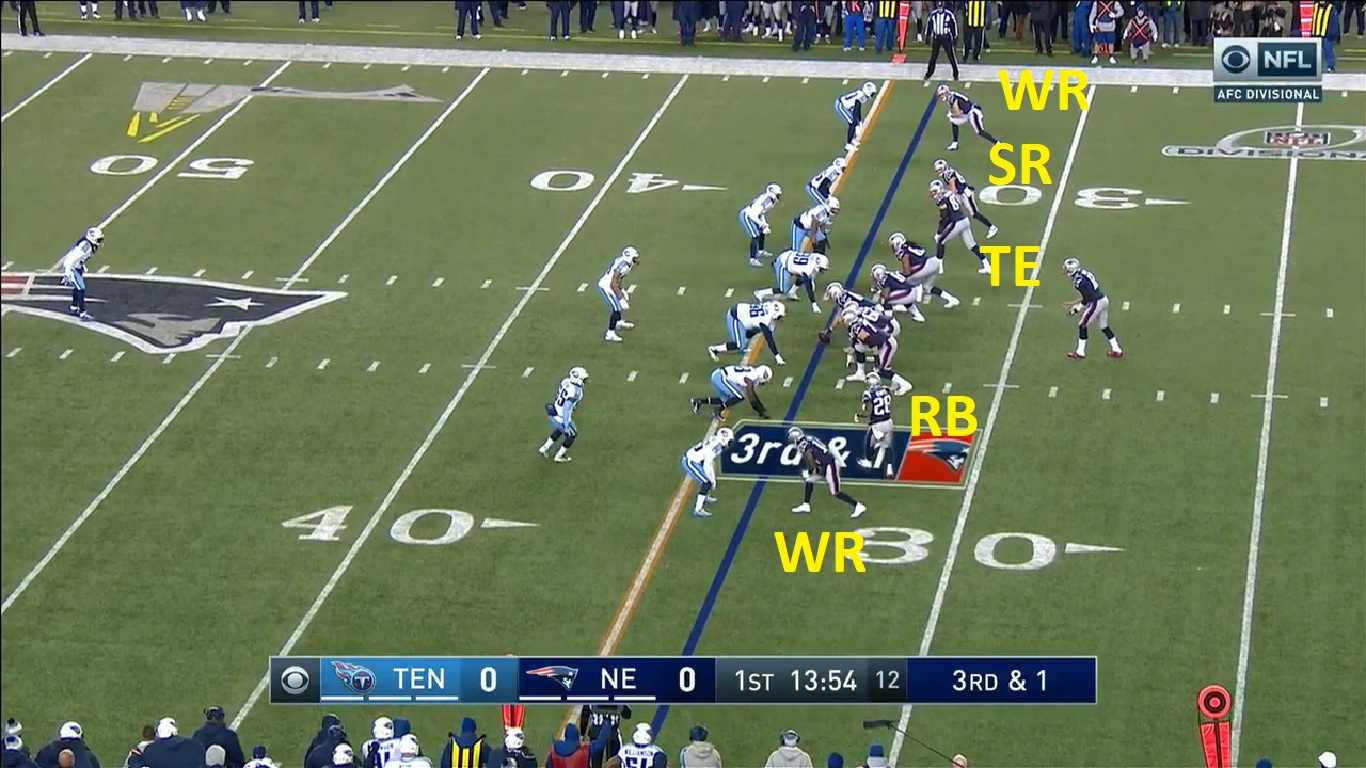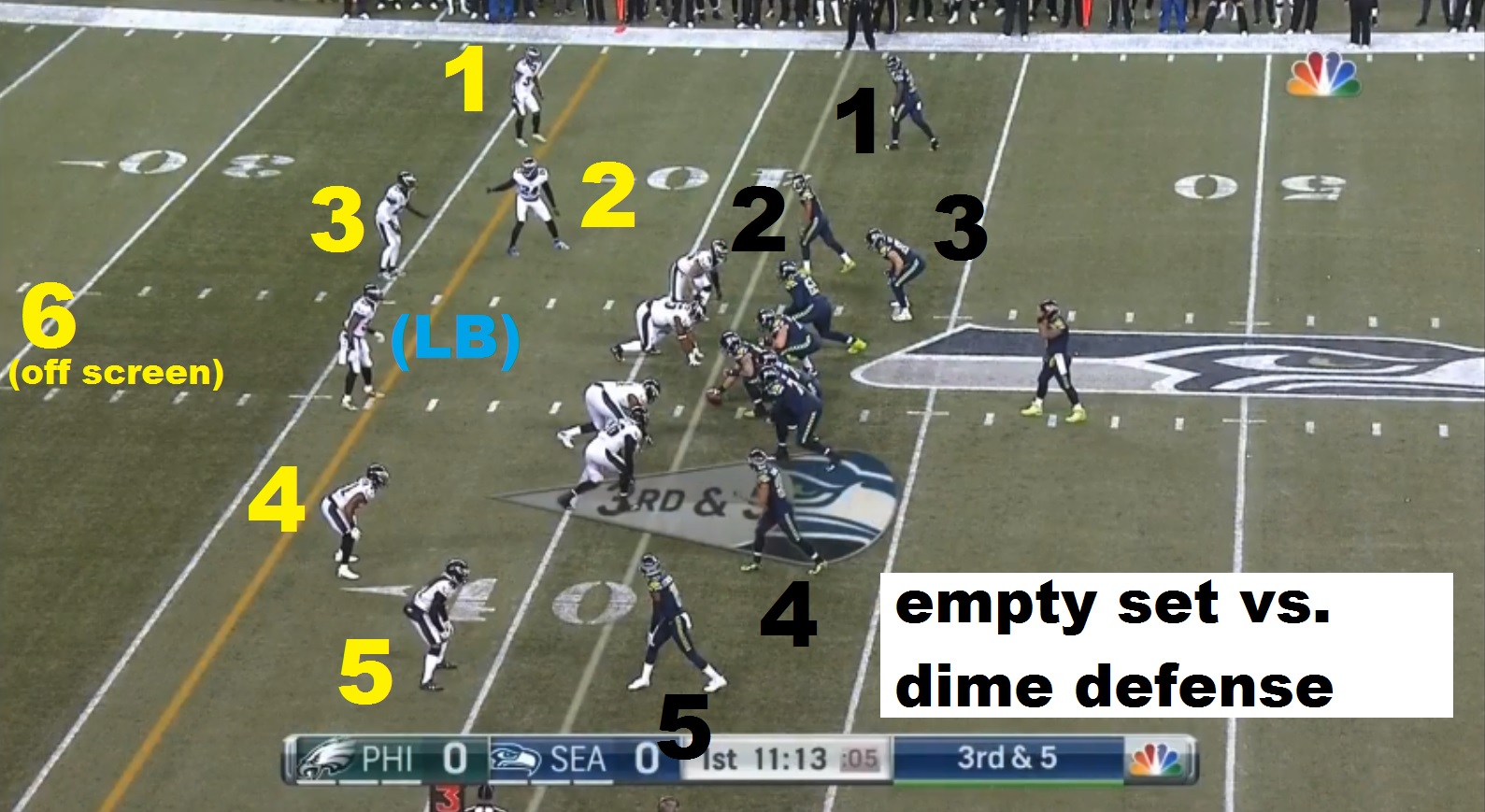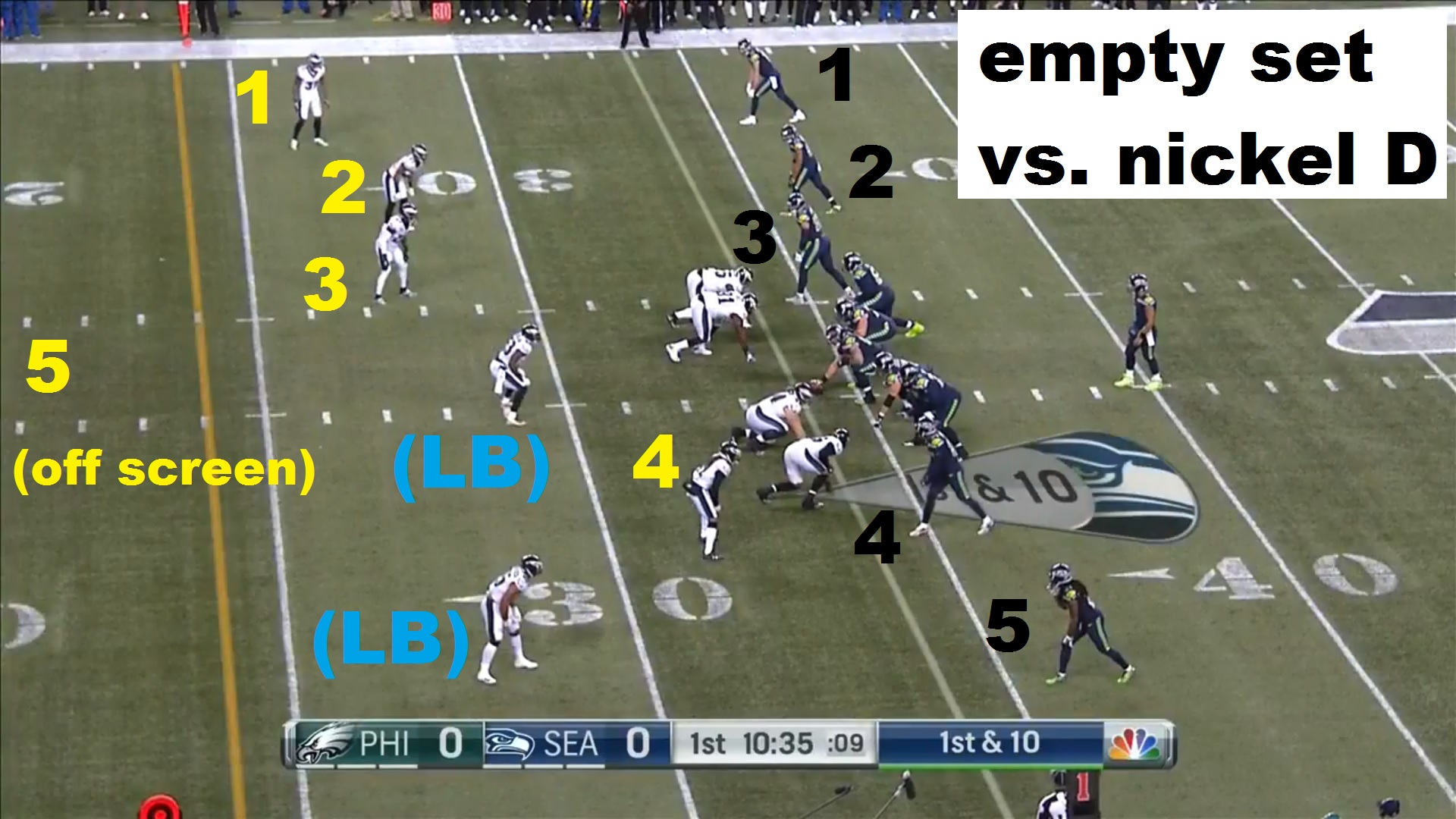Ad Disclosure
Super Bowl 52: A Look at New England’s Offense
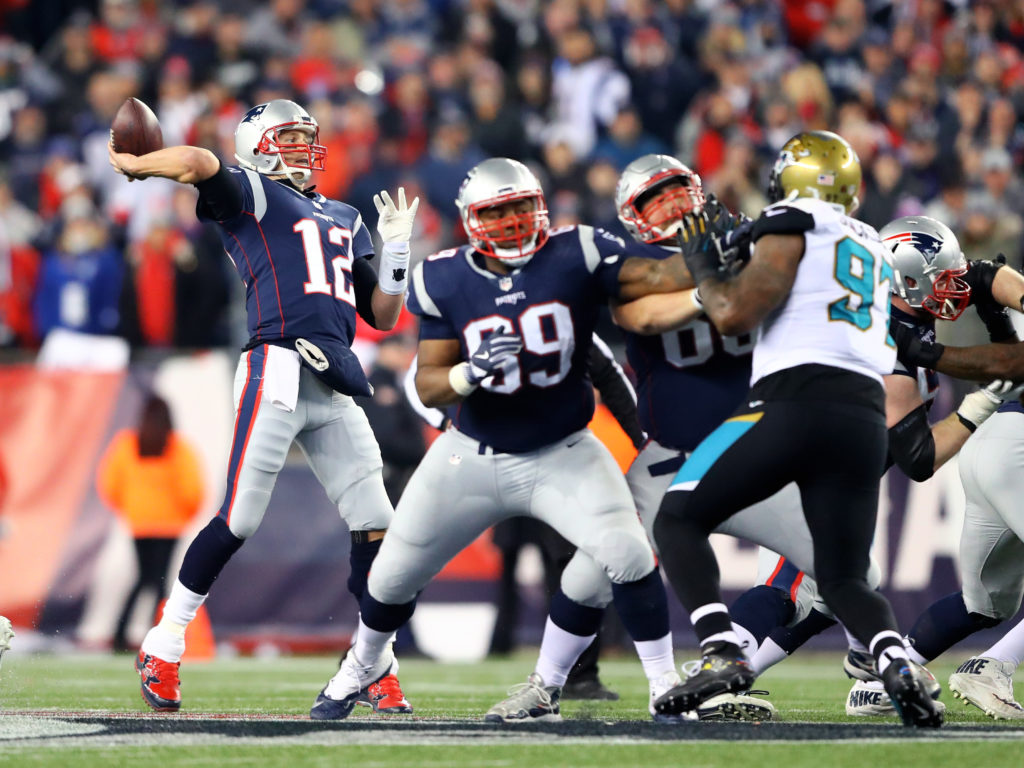
This is part two of our Super Bowl 52 preview, you know, the part where we actually talk about the game itself.
We began on Monday with the Pats’ kicking, punting, and returning, which you can read here:
Super Bowl 52: A Look at New England’s special teams
Today we’re breaking down the Patriots’ offense, a unit that finished with high regular season marks:
- 1st in total offense (394.2 yards per game)
- 2nd in passing offense (276.1 YPG)
- 10th in rushing offense (118.1 YPG)
- 2nd in points per game (28.6)
- 1st in total first downs (389)
- 1st in first downs via opponent penalties (50)
- 10th in 3rd down conversion rate (40.6%)
- 5th in 4th down conversion rate (61.5% on 8-13 4th down attempts)
- 26th in penalties committed (95 total for an average of 8.78 yards)
- 12th in rush yards per attempt (4.2)
- 6th in rushing touchdowns (16)
- 3rd in passing touchdowns (32)
- 8 interceptions thrown (tied for 2nd lowest)
- 4 fumbles lost (2nd fewest in NFL)
- 12 total turnovers (2nd fewest in NFL)
- tied for 13th in fewest sacks allowed (35 total)
- average time of possession 30:25 (11th)
It’s an elite offense that scores points, protects the football, and spreads it around. And the numbers hold up in the postseason, with 29.5 average points in the wins against Jacksonville and Tennessee, plus 391 yards per game. They didn’t run the ball particularly well against the Jags or Titans, but they use their short passing game effectively as an extension of the ground game, which makes the numbers look a little funky.
Tom Brady is 40 years old now, so we’re a far cry from the 2004 Super Bowl where he out-dueled Donovan McNabb. Maybe the Brady/Belichick partnership is finally coming to an end.
But if there were signs of slowing down, that didn’t manifest itself on the field. Brady’s numbers in 2017 were just as good as they’ve always been, and he finished with a completion percentage of 66.3, the third-best mark he’s put up in 18 NFL seasons. He threw for 32 touchdowns vs. 8 interceptions, logged 4,577 yards, and finished with a QB rating of 102.8.
He was top-five in all of those stats.
The supporting cast is the typical rotation of plug-and-play reclamation projects and undersized scat backs to complement a pair of studs in Rob Gronkowski and Brandin Cooks. Every season it just seems like they find that deep draft pick or overlooked free agent and throw him into the system with total success.
Look no further than the rushing game, which is led by ex-Eagle Dion Lewis:
No, he’s not Bell or Gurley or Fournette, but that 5.0 YPC average is top-level.
And looking beyond 1,000-yard receivers in Gronk and Cooks, the passing targets are spread out fairly evenly between Danny Amendola, Chris Hogan, and the stable of running backs who snag the ball coming out of the backfield:
It’s really not that dissimilar from the distribution you find on the Eagles offense, with a Pro Bowl caliber tight end leading the way in front of a very balanced group of receivers. The Birds are the better running team but Jay Ajayi, LeGarrette Blount, and Corey Clement don’t catch the ball the way the Patriots’ backs do.
Finally, on the offensive line, New England returned the entire starting group that won Super Bowl 51. The only difference you’ll see in SB52 is that Cameron Fleming will start for the injured Marcus Cannon at right tackle. Cannon went on IR a while back with an ankle injury. Fleming has been with the Pats for a few years now and played a bunch of snaps as an extra blocker, so he’s not some green plug-in, he’s an experienced guy. Still, I like Brandon Graham and Chris Long working that side of the Pats’ line.
It’s a good unit, but not an elite unit. Brady was sacked the fourth-most times of his career in 2017, and I doubt it has anything to do with him being 40 years old, since he was never quick or elusive in the pocket at any point in his career. The Patriots only allowed three sacks against Jacksonville and none against Tennessee, so at least thus far they’ve risen to the occasion in postseason pass protection.
Empty set and matchmaking
You probably remember that James White set a Super Bowl record with 14 receptions last February. That’s probably going to be the key for the Eagles defense, combating New England’s elite ability to dictate matchups and throw various personnel groupings at you, be it wideouts, running backs, or tight ends.
This is a typical look New England will show you, and it’s the dreaded empty set that the Eagles struggled with in Seattle:
It’s 3rd and 1 and they’re throwing two receivers, a slot receiver, a running back, and a tight end at you. Tennessee is in nickel with a linebacker matched up on James White in the slot, while Gronk gets Kevin Byard, a very good safety, on the other side of the field. That’s 6’6″ 265 pounds against 5’11” 212 pounds, so you’ve got a size mismatch on the right side and a speed mismatch on the left side.
Here’s how it plays out:
You might remember Kendricks getting burned on a sluggo route on a 4th quarter touchdown pass in this game:
That’s one of the key things Jim Schwartz is going to have to figure out this week. Can you afford to have Kendricks lined up on James White in the slot or Dion Lewis coming out of the backfield? Will Malcolm Jenkins get the job done against Gronk? Does Corey Graham get a few extra snaps?
We’ll see.
When the running game extends to the passing game
I mentioned before that the Pats’ running game isn’t this downhill juggernaut, but they do a really good job of getting their backs into space with screens and flares.
White, Lewis, and Rex Burkhead combined for 118 catches for 897 yards and 9 touchdowns in the regular season.
By percentage, they snagged 20.3% of Tom Brady’s passes for 19.5% of his total yards and 28% of his total TDs.
Against the Jags, they gashed ’em on the first play of the game-winning drive with a quick screen over to White:
And against Tennessee, there’s pre-snap motion, the Titans adjust, and Byard is out of position. Brady sees the left flat wide open, so he just dumps it over to White for a first down gain:
Easy enough, right? They’ll take what they give you, and if you don’t close these guys down coming out of the backfield, they’ll gash you for 5, 6, or 7 yards at a time.
Tempo and flow
The Eagles struggled against Eli Manning this season when the Giants twice came out dinking and dunking all over the field with quick releases and up-tempo operation.
New England can do that, too.
They run a bunch of no huddle to keep the ball moving and prevent defensive substitutions. And they do it in very smart situations where they can smell blood in the water and go for the throat.
In the clip below, it starts with an unlikely 3rd and 18 conversion. Seeing an opportunity to rock and roll, they go no huddle and run a flea flicker on the next play. Check out Dawuane Smoot trying to haul ass to get off the field in time:
I mean, that’s such a New England sequence.
“We’re gonna convert on 3rd and 18, then we’ll go no huddle and find our eighth-best receiver for a huge gain.”
Obviously it starts and ends with Tom Brady, who will go down as the greatest of all time. But you when take him out of the equation, what is the rest of this offense? It’s a Pro Bowl tight end, an excellent 1,000 yard receiver, running back by committee and an above-average offensive line. It’s not the Greatest Show On Turf, nor is it the 1998 Vikings. It’s a very good system being executed by the GOAT of NFL quarterbacks and a coordinator who is probably going to be a head coach again someday.
I think if the Eagles defensive line can win in the trenches and make Brady uncomfortable WITHOUT BLITZING, that’s where the game will be won. If you ask your secondary to cover empty set picks and flares and exchange routes while allowing New England to dictate matchups, then you’re going to be in for a long night. And if you bring corners and safeties and linebackers and extra bodies, Brady sees all of that shit. He’s historically been one of the best passers under pressure in the NFL. This year, according to Pro Football Focus, he had a 96.6 QB rating under pressure. The average QB rating was something like 85, so his rating under pressure is better than a bunch of quarterbacks throwing from a clean pocket.
Fletcher Cox and Brandon Graham need to have the game of their lives, and a few plays from Tim Jernigan and Vinny Curry will help also. Look out for Nigel Bradham’s open field tackling, too. He’s been a monster in lateral movement this season and he’s going to be tested against these smaller runners coming out of the backfield.
Should be fun.
Kevin has been writing about Philadelphia sports since 2009. He spent seven years in the CBS 3 sports department and started with the Union during the team's 2010 inaugural season. He went to the academic powerhouses of Boyertown High School and West Virginia University. email - k.kinkead@sportradar.com

